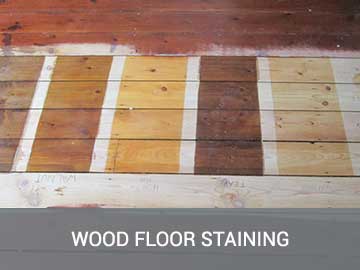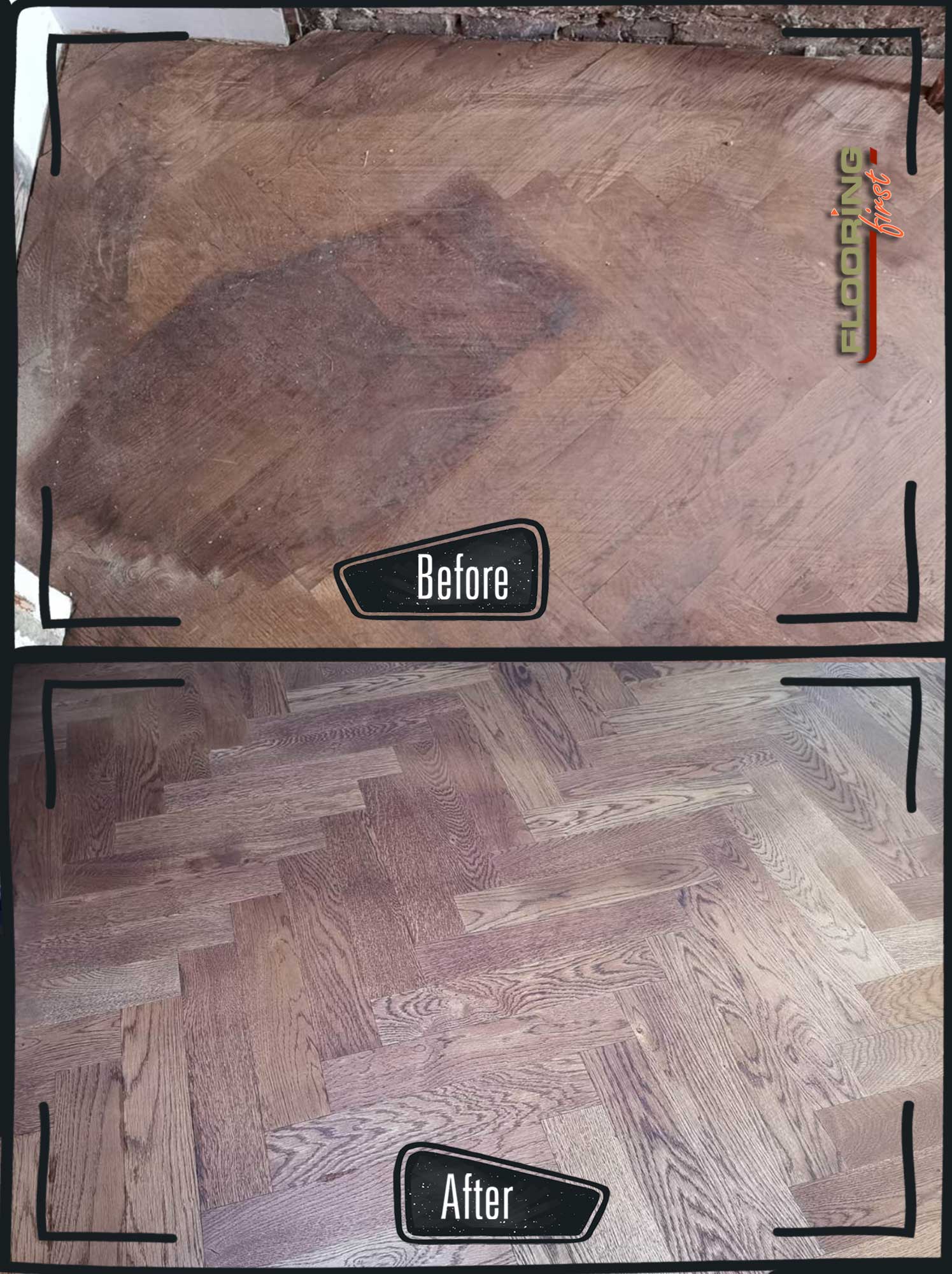Back to DIY Advice
Common DIY Wood Floor Staining Mistakes
 During the many years our professional wood floor sanding and refinishing company is operating in the industry niche, we’ve managed to be involved in the same old conversation over and over again. Maybe at least a hundred times as much as we can remember before we lost the count. The problem is not that we are bored by repeating question. The problem is that this short conversation often illustrates a common misunderstanding and the fact that DIY wood floor refinishing projects are often not the best idea.
During the many years our professional wood floor sanding and refinishing company is operating in the industry niche, we’ve managed to be involved in the same old conversation over and over again. Maybe at least a hundred times as much as we can remember before we lost the count. The problem is not that we are bored by repeating question. The problem is that this short conversation often illustrates a common misunderstanding and the fact that DIY wood floor refinishing projects are often not the best idea.
You better leave all this delicate and challenging job in the hands of professionals with knowledge, skills, and expertise. However, here is how the conversation goes. Often enough, clients come to our place or contact us via phone and ask for advice on how they can stain their hardwood floors. As much as we always try to be effectively helpful, there are many details that should be discussed before you undertake a DIY wood floor staining. What is the wood species as some of them are not good at absorbing wood stains properly? When and how do you plan to sand the floor and would you be able to achieve a super even and uniform surface by yourself because the stain pigments are highlighting imperfections on the surface significantly?
Well, our clients seem to sound very confused, to say the least. “No, you don’t get the idea, I just want to varnish my floor, I want to cover it with a finish.” If we get that last sentence right, you actually want to seal the floor and protect it from water and wear, you don’t want to change its colour or darken it, is that right? “Yep, I want to stain the floor, you get that right.” However, there is a big problem in that last sentence our clients exchange with us – wood floor staining has, actually, nothing to do with wood floor finishing and our clients happen to be stumbling upon this very common and very big misunderstanding.
Worry not, because the experienced and knowledgeable wood floor sanding and refinishing experts are here to help and explain everything you need to know. Of course, you are not required to be familiar with all the wood floor service lingo and it is not important to know the exact term as long as you are not actually making a serious mistake, you don’t know what you want to do as a treatment to the floor which is often a quick gateway to some common and, unfortunately, serious wood floor problems. So if you don’t want to be a part of the miserable statistic of failed DIY-ers and fall into the trap of wood floor staining problems, make sure to continue reading this article.
First things first, let’s clear out what wood floor staining actually stands for. This is a very narrow term and it stands for the suspension of pigment particles (that are solid) in a solvent. The even mixture is then applied on the surface of wood floors. The aim is to darken or completely changing the natural colour of the wood species. On the other hand, wood floor finishing stands for the application of finishing products on the floor’s surface. While wood floor finishes come in a great variety and varnish is just one example of them all, the main achievement of the finish is the sealing effect of protection against wear and water. A finish is a generic term for all the substances creating a protective coat on the surface of the floor and giving it a reflective sheen.
Well, wood floor professionals do not have to expect that everyone will be familiar with the difference. In fact, many people with no experience or knowledge of the industry actually mix the two terms and this is something very common. However, this misunderstanding can lead to a number of problems you definitely don’t want to experience. One more thing that should be clarified is that wood floor staining is not a part of the wood floor maintenance routine. To say that in other words, while sanding and refinishing are recommended every now and then as a part of the proper care and maintenance for the floorboards, wood floor staining is not a necessity. It is even not recommended in any case. As we said, some wood species are not good at absorbing the floor stain substance properly or at all.
Furthermore, wood floor staining is not as easy and effortless as painting and decorating your walls, for example. It is an often challenging and very specific process that even experienced professionals lose sleepover. It requires attention, skills, mastership and it is not uncommon that DIY projects turn into a disaster. So make sure that whenever you want a wood floor staining treatment for your floorboards, you fully understand the meaning of this treatment and the results you are going to get. Then contact your area’s contractor of professional services and make sure to ask them for help. Otherwise, you are risking experiencing some of these very common DIY wood floor staining problems:

Poorly sanded surfaces look even worse because of staining
As we’ve already said – staining can make things even worse as the stain pigments are going to highlight the imperfections on the floor’s surface even more and accentuate even the most invisible and minor scratches and flaws. This is why you should carefully consider if staining is what you want and need. Unfortunately, poor sanding performance is something you can struggle with both if you DIY it or hire a not so professional company to do it. In this case, even if the surface looks pretty clear and uniform after the process, the stain pigments will later lodge into all the scratches, pores, gouges, and dents, and you will end up with a very ugly floor indeed.
Some wood species cannot be stained
You need to know the wood species of your floor before you even start applying the wood floor stain. This is important because some wood species such as maple, birch, pine, and fir are especially difficult to stain evenly due to their dense structure. Because of the dense pores, the stain pigments will have fewer places to ledge into and since those places are not regularly spread, you will end up with uneven and non-uniform staining.
Ugly bleedback
Unlike any other finish, a stain is applied by rubbing the substance onto the wood’s surface with rags and then immediately wiping off the leftover product. Keep in mind that your floor will not get darker if you apply a second coat or leave a lot of excess stains to be absorbed by the boards. In fact, if you do these you are risking experiencing the ugly “bleedback” – when the stain wicks back up to the surface as solvent begins to evaporate.
Drying takes a lot of time
Unlike the latex stains for your walls, wood floor staining is a process that requires a lot of drying time. Furthermore, staining is just the first step of the whole process and it should be continued by adding two or even three coats of clear finish over the stain to protect the colour and provide it with resistance and preservation from abrasion. Keep in mind that clear finishes can be applied only on the completely dry stain, otherwise, the results can be catastrophic. As you can guess, the whole process takes a lot of time.
Do you want your floors darkened or in a new colour so bad so that you are ready to go through all the challenges and possible shortcomings of DIY wood floor staining? Have a minute to think about it!